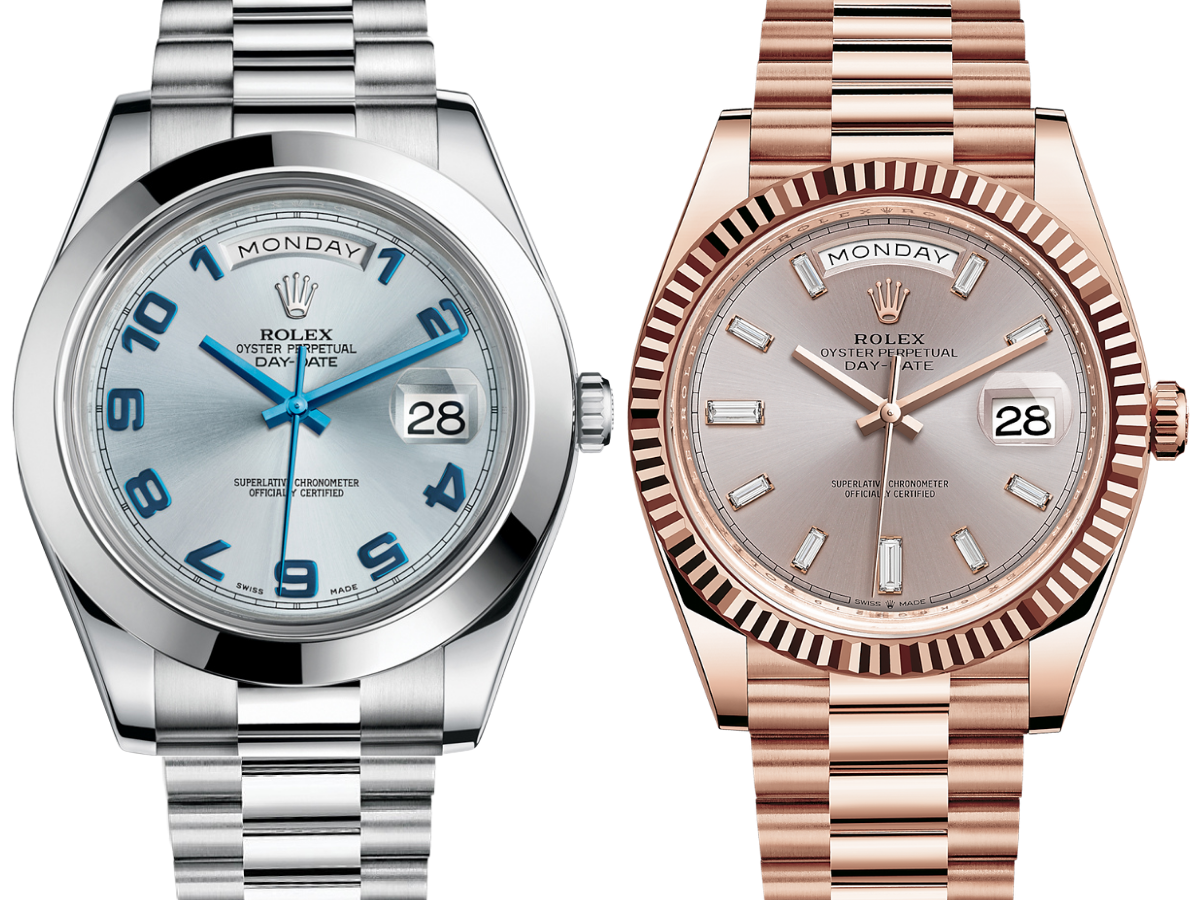The Rolex Day-Date was introduced in 1956 as the Crown’s flagship watch. It was the first timepiece in history to display the day of the week spelled in full at 12 o’clock. The premium status of the watch was made even more apparent with its gold or platinum construction, and special “President” bracelet. For decades, the Day-Date was available in just 36mm sizes. Due to the growing demand for larger watches, a bigger 41mm version was introduced in 2008: the Rolex Day-Date II. Just seven years later, it was replaced by the Day-Date 40. Even with their almost similar dimensions, each model provides a different version of the classic dress watch. Here’s a closer look at the differences between the Rolex Day-Date II and Day-Date 40: |
|
Rolex Day-Date 40 Platinum Diamond 228396TBR / |
|
|
Rolex Day-Date II White Gold Blue Dial 218239 |
|
|
Rolex Day-Date 40 Gold Watches |
|
|
|
Rolex Day-Date II Gold Wave Dial Watches |
|
|
|
Rolex Day-Date II Yellow Gold 218238 |
However, what sets their dials apart are the printed designs and the shapes of the diamond hour markers. The Day-Date II comes with special edition wave-printed dials in blue and black. Meanwhile, with the Day-Date 40, Rolex introduced new laser etching technology to create dial patterns featuring stripes, crisscross, and quadrant motifs. The indices are also more modern on the Day-Date 40: the Roman numerals are faceted and deconstructed, and gem-set hour markers are baguette-shaped. These replace the round brilliants in a square index setting seen on Day-Date II. |
|
Rolex Day-Date 40 Gold Watches |
|
|
Rolex Day-Date II Ice Blue Dial Platinum 218206 |
|
|
Calibers 3156 and 3255 |
Meanwhile, the Day-Date 40 received an upgrade with the new Caliber 3255. With 14 patents and a 70-hour power reserve, this movement presents improvements in precision, shock- and magnetic-resistance, and overall reliability. |
|










